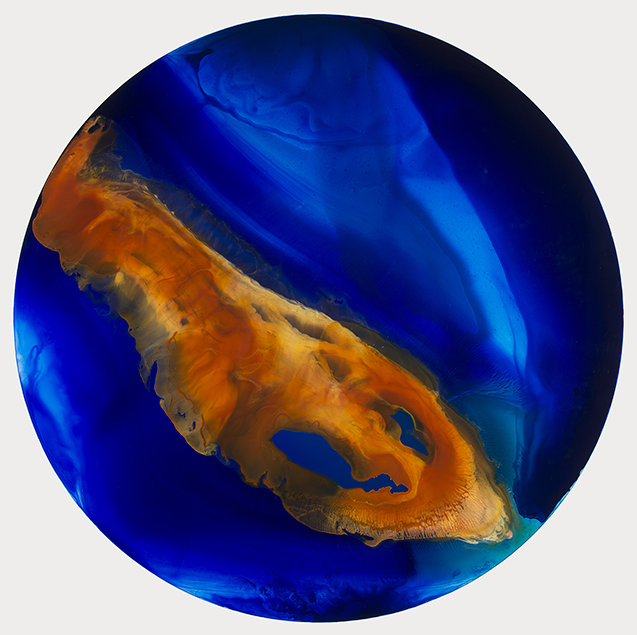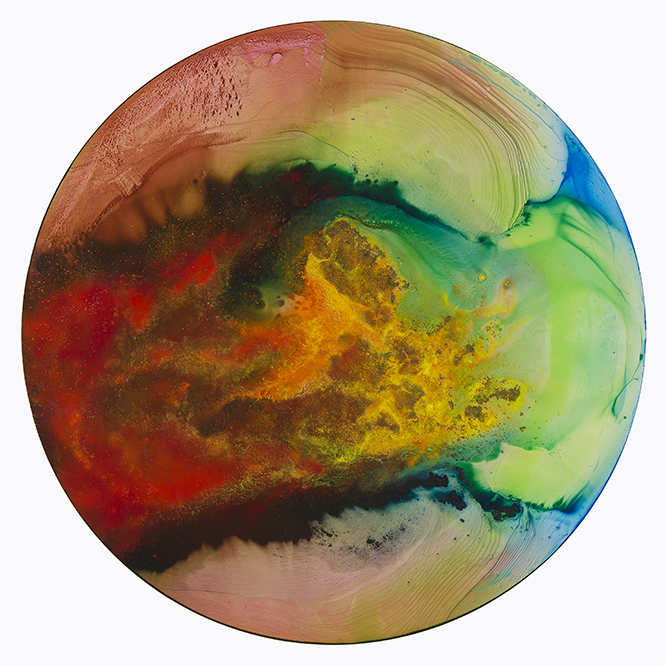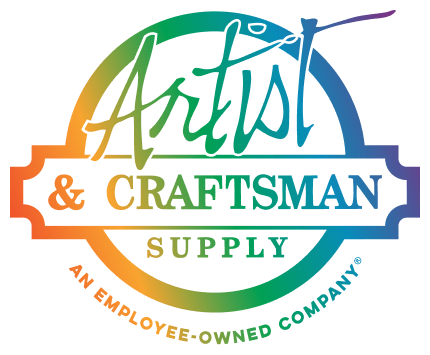Posted by Curry S. on Jan 28th 2020
Turning Pollution into Paint Part II
John Sabraw has a long resume including professor, environmentalist, and artist. Read below to learn more about the incredible work John is doing to clean polluted streams and create amazing art in the process. If you're inspired by Johns work, we urge you to join us in donating to his Kickstarter, Toxic Art: Turning Pollution into Paint.

John Sabraw | Chroma S4 Serpentine | AMD pigments and other paints on aluminum composite panel | 54" x 54" | 2017
A&C: What can we do as artists to help cut down on pollution?
JS: A LOT! Small changes made in your everyday life to reduce your harmful impact on the environment will help lessen your studio-related pollution as well. Recycle everything you can, use as little plastic as possible, don’t wash dangerous chemicals down the sink, use grey water whenever possible, reduce water use elsewhere, purchase carbon offset credits to make your practice carbon neutral, etc..
But for oil painters in particular, use a three (or more) jar recycling system for brush cleaning solvent. I use large mason jars with Gamsol, so I can see how much sediment is in each, and the lids are liquid tight. Wipe any excess paint off of your brush, wash thoroughly in jar one, then jar two, then jar three. After that your brushes should be super clean! When you come back to the studio the next day, the paint you washed off will have separated into paint sludge on the bottom of the jars and clean solvent will be on top, with jar three being nearly free from any paint residue. Eventually, jar one will collect too much paint sludge to use properly. Pour off the clear solvent on top into a new jar – this new jar now becomes jar three and three becomes jar 2 and jar two becomes jar one. Repeat nearly forever. I haven’t bought new solvent in years. Contact your local waste entity for proper disposal of the paint sludge in the bottom of the jar and then reuse or recycle the glass jar.
There are many more tips I am working on as I start to build a sustainable art practice guide so stay tuned!

Left: Paint & Pigment Set
Right: Gamblin Customer Color
A&C: How has this project influenced you as an artist and human on planet Earth?
JS: We might need drinks for this one because we could talk about this for hours, especially philosophically. But in a more practical sense – by investing in this project for so long, I have come to the realization that even the smallest, most obscure attempt at engaging in environmental, community, or humanitarian work or conversation can have a positive impact, and you cannot know ahead of time how small or large that impact will be. So, I remind myself to just do something. Don’t worry if it’s going to fix everything or not, or if you’ll be made fun of or not (hint: you will be).

Drone Shots of AMD Seep | Oreton, Ohio
Artists are spatially inventive, your crazy idea of how to clean up, prevent, or make new is probably pretty damn good. And even if it isn’t, it will spark someone else to tweak it and make it work. You are already your own best asset, don’t let the lack of a science degree or other training stop you from trying to make a positive impact. We need everyone!
So overall, working on this project has actually made me more positive.

John Sabraw | Chroma S4 Nebula | AMD pigments and other paints on aluminum composite panel | 54" x 54" | 2017
A&C: Are there any upcoming artists and/or art installations you’re particularly excited about?
JS: I want to go to the Bo Bartlett Center for sure, and I’ve been watching Angelo Vermeulen, Zaria Forman, Alison Hiltner, Jave Yoshimoto, and Rene Detrixhe, amongst a thousand others, for inspiration. Honestly, every time I meet a new artist, I get excited about them and I usually walk away thinking “they’re so cool, can’t believe I got to meet them, I wonder if I could ever be that cool?”

John Sabraw | Chroma S4 Chimaera | AMD pigments and other paints on aluminum composite panel | 48" x 48" | 2017
A&C: What’s next?
JS: I am at Georgia College April 19th doing workshops and a keynote address for Earth Week Symposium, I have solo exhibitions of my work upcoming in Boylston, MA, Martha’s Vineyard, MA, and Beacon, NY so I will be painting like crazy. I will also be traveling to Malaysia in the fall to work with Environmental and Arts groups to see how we might be able to address environmental issues there through art and collaboration. I’m super psyched!
And of course, if our plant is successful, we prove our process can work on an industrial scale, we will be working to get a new facility built that can handle the entire flow of the Corning Mine Seep and save Sunday Creek. Then maybe our pigments become standard in paints everywhere.

John Sabraw | Chroma S4 Dragon | AMD pigments and other paints on aluminum composite panel | 48" x 48" | 2017
A huge thank you to our partners at Gamblin, Sugar Bush Foundation, Ohio University and to my artist friends, my students and colleagues, my family – and our awesome supporters through Kickstarter. Our success is your success!
Thank you to John for sharing your work with us. For more
information about John and Turning Pollution into Paint make sure to watch his
Ted Talk, visit his website and his Kickstarter.

